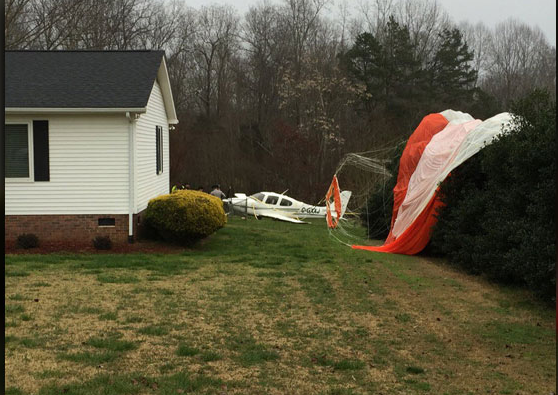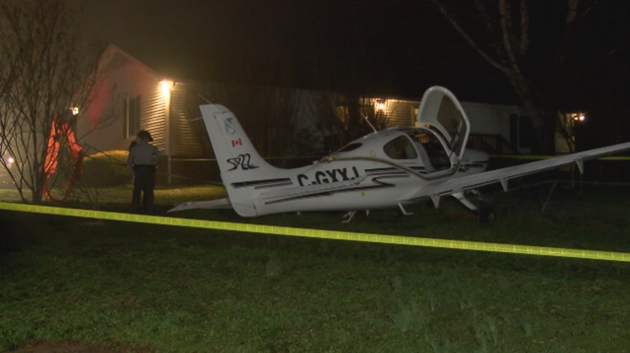How a Controller Sounds When Trying to Save an Airplane
Yesterday the ceilings were low and the weather was bad across the southeastern United States. In these circumstances, a Cirrus SR-22 aircraft that had started out in Canada, stopped to clear customs in Erie, Pennsylvania, and was ultimately headed to Florida apparently ran low on fuel over North Carolina.
In the bad weather, the pilot was not able to land. With fuel diminishing, he pulled the parachute—as often discussed, these parachutes-for-the-whole-airplane are distinctive Cirrus features — and came down near a house in Kannapolis, North Carolina. Here is how the plane looked after it hit the ground (via screen grab from WBTV). The big orange-and-white thing is the parachute.

And another, via screenshot from Fox 46 in Charlotte, emphasizing the minimal damage to the airplane. More photos are at the aviation site Kathryn’s Report.

I’m being deliberately vague in discussing what might have happened and why, and how it might have been avoided. Mainly that’s because it takes a long time to know for sure. But also that’s because I want to emphasize this real-world specimen of how air-traffic controllers do their job.
Recommended: Why Amazon's Data Centers Are Hidden in Spy Country
If you listen to the clip below (via COPA, the Cirrus Owners and Pilots Association) you’ll find the action starting at time 13:15. First a pilot calls in from “Charlie Golf X-ray X-ray Juliet,” the phonetic pronunciation for a Canadian-registered plane C-GXXJ. (Canadian planes start with C, or Charlie; U.S. planes with N, or November.) He’s answered by a controller from Charlotte Approach, which handles traffic into and out of the very busy Charlotte airport. When neither is talking, you hear nothing at all.
At this stage, Canadian plane has just tried to land at the main Charlotte airport, was not able to (as will be explained), and is talking with the approach controller about what to do next. The controller says he understands that the plane is very low on gas, and offers to direct him toward “pretty much anything you want” (except Charlotte itself). The nearest feasible landing site appears to be Concord Regional airport, which has instrument approaches and a big, long runway.
The discussion proceeds from there, all the way until the end of this clip. More details after you’ve had a chance to listen.
Read more from The Atlantic:
This article was originally published on The Atlantic.

